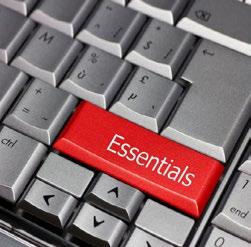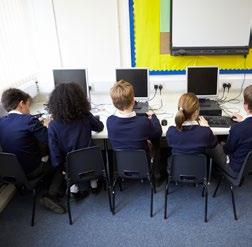
4 minute read
Recommended Structure of ICT Policy for Schools
by which the group seeks advice. Following this, the document can form the basis for a whole-staff discussion. The working group can then finalise and present the policy.
INTRODUCTION In this section, you should cover the following: 1. What do you mean by ICT? You may like to refer to this as learning technologies, digital technologies or what ever terminology is more appropriate to your situation. It needs to refer to the work that children do with ICTs in addition to defining what ICT capability is - the disposition of children to construct ICT solutions to problems which are appropriate to the context and are based on the knowledge of the opportunities and limitations offered by the technologies available. 2. Why ICT? Why do staff believe it is important that children’s ICT capability is developed whilst using it to enhance subject learning?
Advertisement
What are the aims of staff in terms of developing capabilities in ICT? 3. Statement of aims - in this section, you will note the school’s agreed intent in this area, which is suitable for teachers and governors.
It is essential that this is based on the National Curriculum requirements and it also needs to be clear that every child will have access to ICT resources and tools for learning. The statement should reflect the school’s ethos and aims.
4. How the policy has been prepared or what state it is in at present? 5. What (if it is not clear already) is the pur-
pose of the document? It should be to inform staff, students and governors what is expected of them if you are to make best of and achieve the highest quality standards in ICT capability.

IMPLEMENTATION In this section, you will need to cover the following:
1. Towards achieving ICT policy aims - this is to do with the ICT experiences the school intends to give the children in order to achieve the above policy aims and objectives. 2. ICT Resources - the ICT equipment and materials the children will have access to by means of the policy. 3. Social and cross-curricular outcomes - this is a time to remind the stakeholders that gaining knowledge is not the only outcome of the teaching process. 4. Teaching styles - continuity and learning progression in ICT capability can only be achieved if all staff agree to the same methods. A clear outline of the teaching methods should be listed here to help remind staff of what they agreed. 5. Equal Opportunities and Multiculturalism - your school’s equal opportunity statement may appear at this point. 6. Roles and responsibilities - list the names of the people involved in overseeing the implementation of the ICT policy and what their responsibilities are in relation to it.
7. Methods of monitoring children’s learning
progression and continuity - who is responsible for overseeing the teaching practices in all classes? Who is to ensure the children’s entitlement?
SCHEMES OF WORK (WHOLE SCHOOL OR KEY STAGES)


In this section, you will need to cover the following:
Schemes of Works for Early Stage 1, Stage 1 and Stage 2
In this section, you should cover the following:
1. Overview of the Early Years Learning
Framework - what will children be given opportunities to. For example, ICT equipment, exploring computer systems and control technology in everyday life.
2. Overview of the National Curriculum re-
quirements for Stage 1 and 2 - Also, you
might include a list of the ICT skills taught; what they will learn about handling information; what they will learn about controlling and modelling. For example, recognising how everyday toys and devices respond to signals.
3. Overview of the teaching and assessing of
the General Capability ICT - how will ICT capability be integrated through the use of digital technologies?
4. What themes or topics will be covered in year groups?
5. The way in which ICT will be used to support learning with cross curricula links.
Assessment and Recording of Students’ Learning Progression in ICT Capability
List here the purpose of the school’s formative assessment strategies and the agreed methods of record keeping and the times by which students will be assessed.
You will also need to state the location of examples of students’ work which exemplifies levels of attainment in ICT capability and ICT literacy.
Resources
List the following:
• List of resources; • Deployment of resources; • Future purchasing policy; • Repair arrangements with ICT equipment.
Teacher Professional Development
How will you develop:


• ICT capable teachers? • What are ICT capable teachers? • ICT capable classrooms? • Effective teacher in-service PDs in ICT integration?


